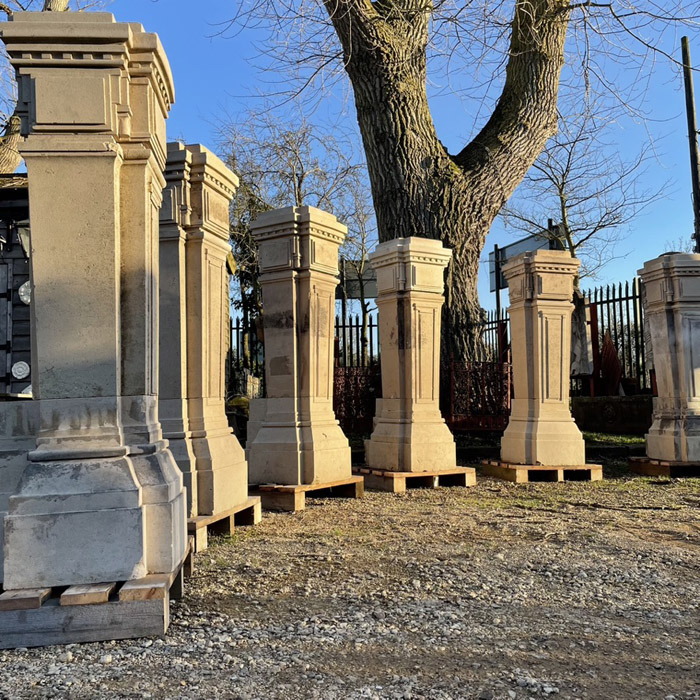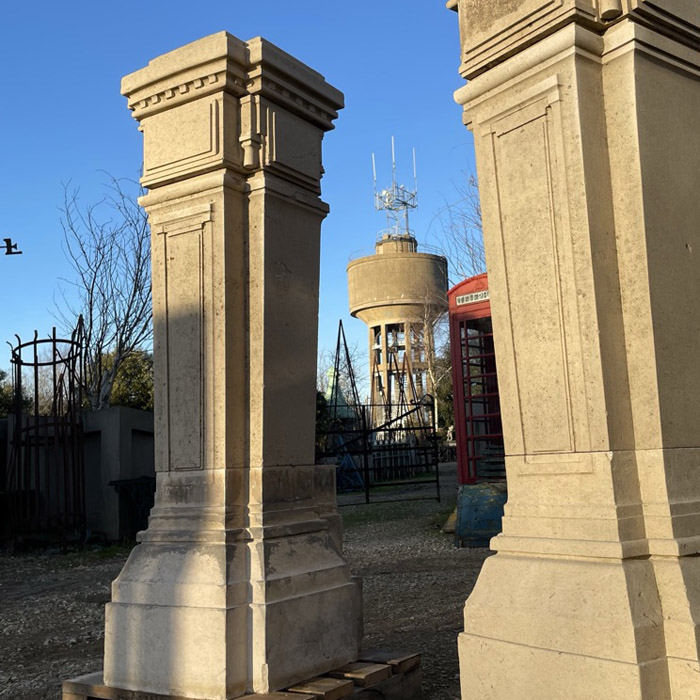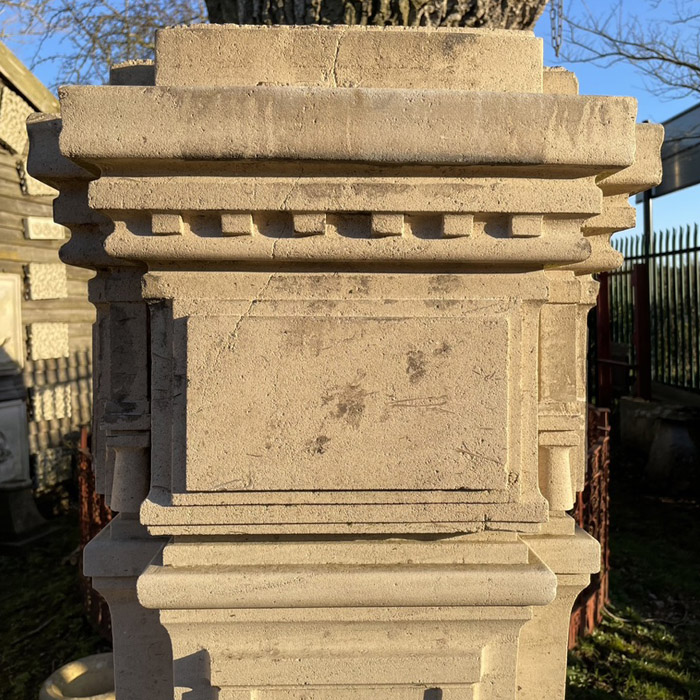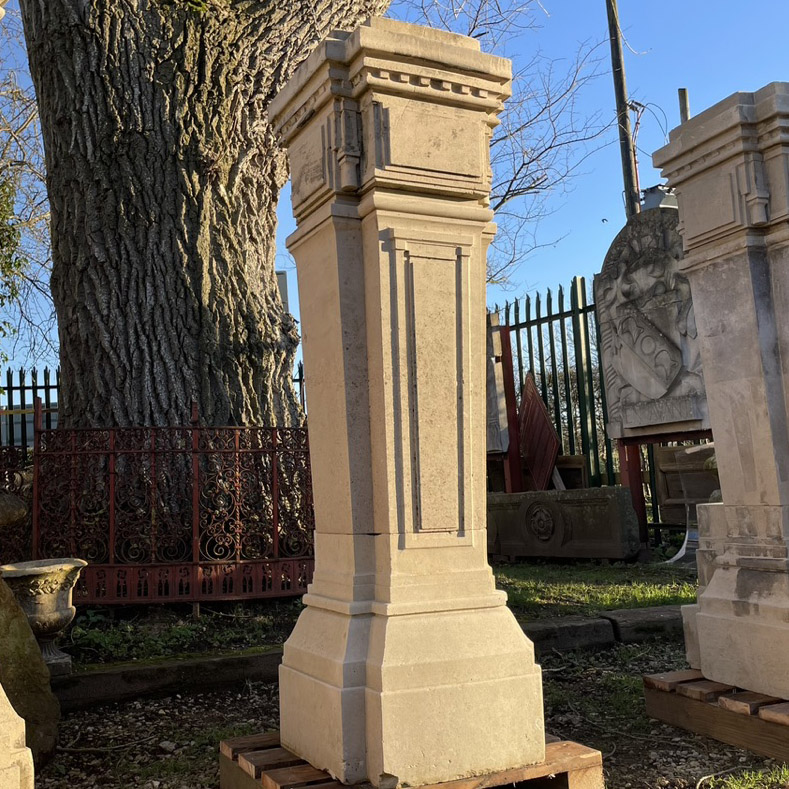A set of six monumental Edwardian Portland stone sculpture pedestals
each square-section tapered pedestal with inset corners, attached to the wall at the foot-block, and each faced with a rectangular tablet with dentil and guttae mouldings above a panelled pilaster stem,
£60,000
The design of Eton’s fabulous School Hall (built 1905-8) was awarded to a former Etonian – architect Laurance Hall – the decision being overseen by Norman Shaw. The Hall, together with a new library, formed a complex of buildings at the heart of the school in memoriam to the 129 Etonians who fell in the second Boer War (1899-1902). It was opened in November 1908 by Edward VII.
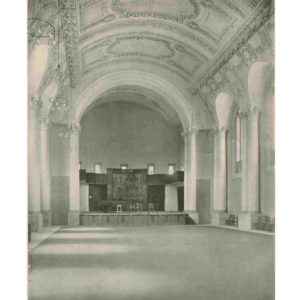
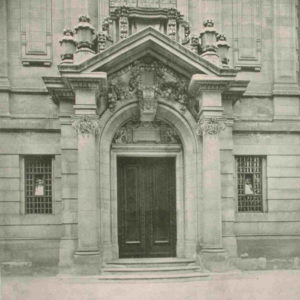
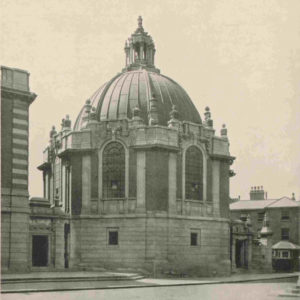
These very large pedestals were intended to support busts of worthies and ran along a colonnaded corridor separating the Hall from the Classical Museum. The hall has been wonderfully restored and reformatted first in the 1930’s, and again in recent months that has resulted in the disposal of the stonework. We have salvaged a spectacular fireplace from the same building – also by Broadbent – it shares the same story as these pedestals: Read it here.

